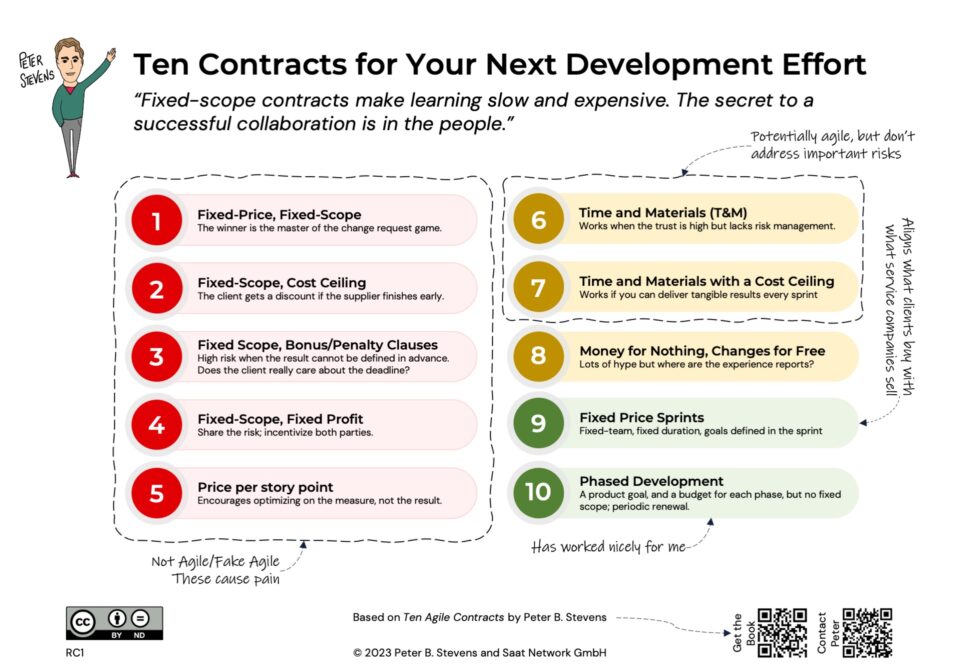What does a Sourcing Manager need to know about Scrum?
24-05-2019The financial risks of customer and contractor
28-05-2019 |
| Is your project more like resurfacing a runway or creating the next generation smartphone? Runway courtesy of Chris Eason |
The Project Management Institute defines a project as “a temporary endeavor undertaken to create a unique product or service.” Projects are different from other ongoing operations in an organization, because unlike operations, projects have a definite beginning and an end – they have a limited duration.
This definition leaves open whether the final result is knowable in advance. Consider two projects:
- Resurface, extend and equip the main runway so that an Airbus A380 can take off or land in 95% of the weather conditions experienced at that location.
- Create the next generation of our smartphone so that it will increase our market share this Christmas.
In the first case, the parameters are mostly knowable in advance, assuming you have access to the data. The weight, dimensions and take-off and landing performance of the aircraft are documented; airport elevation, winds, temperature and other weather data are available; the ICAO defines markings, lightings and other norms for instrument approaches. Based on this information, you can spec out the runway.
Where I live in Switzerland, the process of deciding to expand or upgrade the airport is a very long political process. By the time the request for tender is published, all of the details have been decided. The only questions left are who will build it, how much will it cost, and will they deliver it on time?
This runway is unique, though it will be similar to other runways at other commercial airports. An airport operator is unlikely to have the skills and equipment needed to build a runway, so it needs the help of a construction company. The construction company is unlikely to be interested in operating the runway after completion. To get that runway in service, even more specialized skills are needed, like installing and configuring the Instrument Landing System, which are outside of what we normally consider “construction.” And finally, when it’s done, it’s done. The airport has no more work for the construction company, so that company needs to find other work from other customers.
At the beginning of the runway project, you know exactly what you will get at the end of the project. Building the runway is a classic project. Bring a team together, do the work, disband the team and let the owner (in this case the airport) operate the results.
What about the next generation smartphone? There are really only two acceptance criteria for this project: 1) it has to be ready for the Christmas season, because that is when demand is highest, and 2) it has to be so amazing that people are willing to spend serious money on it, even if their current phone is still perfectly operational.
Creating that amazing new smartphone requires looking at and evaluating alternatives, getting feedback, and then making decisions about the product based on what you learn during the creation of the product. You know what the goal is and what the deadline is, but you don’t know “exactly” what you are going to get. Furthermore, you will need to repeat the exercise next year, because who’s going to get excited about last year’s model next Christmas? Product development never really ends, unless you give up on the product. Why would you disband the team?
If your “project” looks more like developing the next generation smartphone, then your contract form needs to enable learning and decision making in the product development team, so decisions can be taken quickly and effectively by those with most knowledge of the product and market.
You can get the whole book now, or you can read it a chapter at a time as I publish it here under the label ten contracts. To download the e-book or pre-order the physical book visit https://saat-network.ch/ten
Edit: Added Picture




